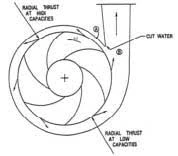Mobile:+86-311-808-126-83
Email:info@ydcastings.com
casting 6061 aluminum
The Versatility of Casting 6061 Aluminum An In-Depth Look
Aluminum is one of the most widely used metals in engineering and manufacturing due to its remarkable properties, such as lightweight, corrosion resistance, and excellent thermal conductivity. Among the various alloys available, 6061 aluminum stands out as one of the most versatile and commonly used. The casting process further enhances its adaptability, making it an ideal choice for a variety of applications ranging from aerospace to automotive and beyond.
Understanding 6061 Aluminum Alloy
6061 aluminum is a medium-strength alloy that primarily consists of magnesium and silicon as its main alloying elements. It offers a good balance between strength, workability, and corrosion resistance. This alloy is particularly known for its excellent welding characteristics, which makes it an attractive choice for structures that require strong joints. In its cast form, 6061 can be manipulated into complex shapes that are both lightweight and durable.
The Casting Process
Casting is a manufacturing process wherein molten metal is poured into a mold to create a desired shape. For 6061 aluminum, several casting techniques are utilized, including sand casting, die casting, and investment casting. Each method has its unique advantages
1. Sand Casting This traditional method involves creating a mold from sand and then pouring molten aluminum into it. It is cost-effective and suitable for producing large and complex parts. Sand casting is particularly valuable for one-off or low-volume production.
2. Die Casting This process uses a reusable metal mold and is ideal for high-volume production. Die casting produces parts with excellent dimensional accuracy and a smooth surface finish. It is often preferred for components requiring tight tolerances and intricate designs.
3. Investment Casting Also known as lost-wax casting, this technique is used to create highly detailed and intricate shapes. It’s capable of producing parts with excellent surface finishes and precise dimensions, which is vital for applications in industries like aerospace and medical devices.
casting 6061 aluminum

Applications of 6061 Aluminum Castings
The versatility of 6061 aluminum castings allows for its use across various industries
- Aerospace Components made from 6061 aluminum are commonly found in aircraft structures, including frames, fuselage parts, and wing components. The alloy's strength-to-weight ratio is crucial for enhancing fuel efficiency while maintaining structural integrity.
- Automotive In the automotive industry, 6061 aluminum castings are utilized for engine components, chassis parts, and various brackets. The reduction in weight leads to improved fuel efficiency and performance.
- Marine Due to its excellent corrosion resistance, 6061 aluminum is popular for marine applications, including boat parts, fittings, and other equipment that require durability in harsh environments.
- Construction Architectural applications benefit from 6061's aesthetic appeal and strength. It can be used for window frames, structural components, and decorative elements.
The Future of 6061 Aluminum
As industries continue to seek ways to reduce weight while increasing performance and durability, the demand for 6061 aluminum castings is expected to grow. Innovations in casting techniques and the development of hybrid materials incorporating aluminum will likely enhance the capabilities of this alloy.
In conclusion, 6061 aluminum casting presents a remarkable combination of strength, lightweight properties, and versatility. Its various casting methods ensure that it can meet the demands of an array of applications in different sectors. As technology advances and industries evolve, the role of 6061 aluminum is set to expand even further, making it a staple in the ever-growing landscape of modern manufacturing. Whether it’s in your vehicle, aircraft, or structural design, 6061 aluminum castings are undoubtedly shaping the future of various technologies.
-
Why Should You Invest in Superior Pump Castings for Your Equipment?NewsJun.09,2025
-
Unlock Performance Potential with Stainless Impellers and Aluminum End CapsNewsJun.09,2025
-
Revolutionize Your Machinery with Superior Cast Iron and Aluminum ComponentsNewsJun.09,2025
-
Revolutionize Fluid Dynamics with Premium Pump ComponentsNewsJun.09,2025
-
Optimizing Industrial Systems with Essential Valve ComponentsNewsJun.09,2025
-
Elevate Grid Efficiency with High-Precision Power CastingsNewsJun.09,2025











